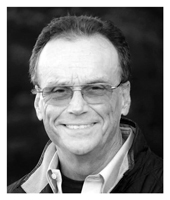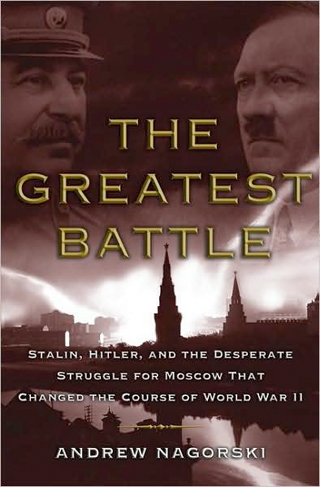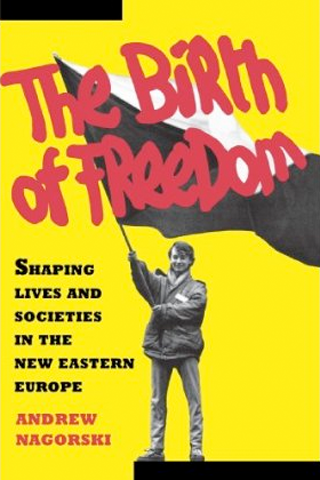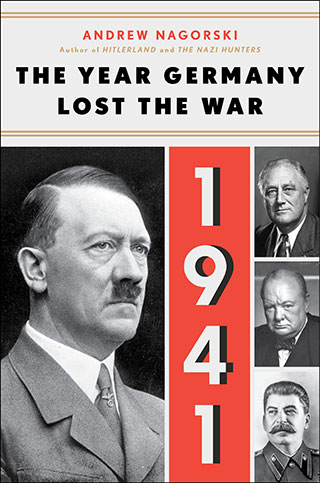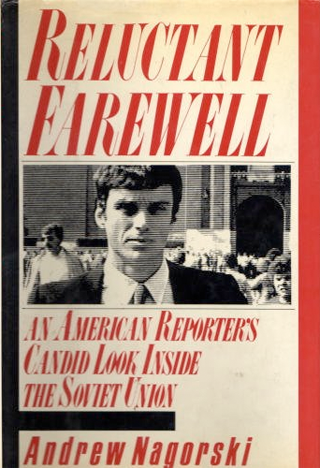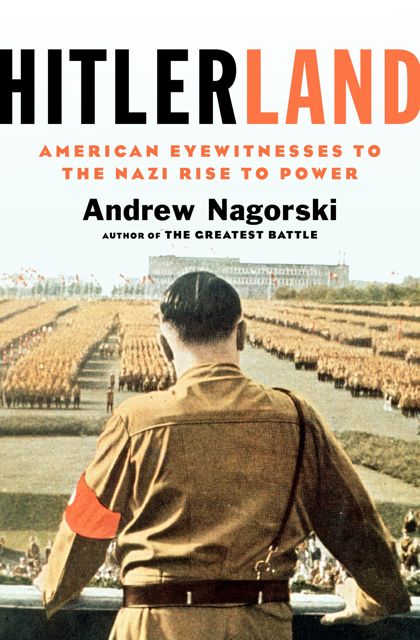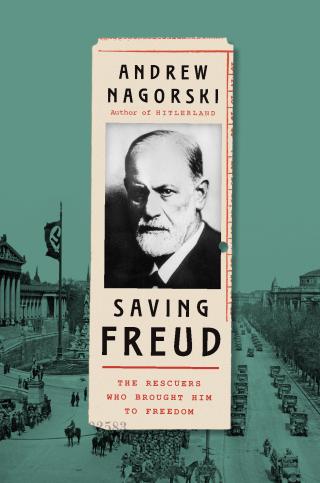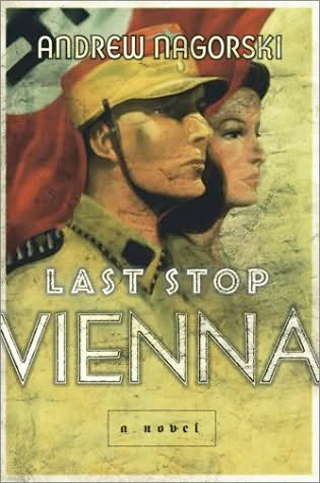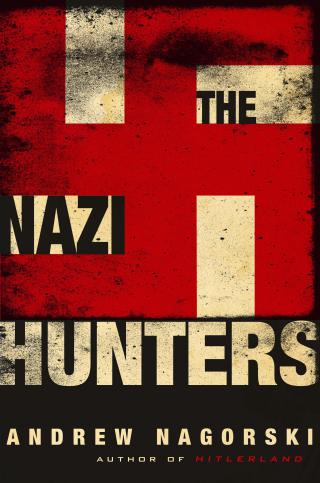
One of the great myths of the postwar era was that Israeli agents were constantly scouring hideouts all over the world, relentlessly tracking down Nazi war criminals. Nothing could be further from the truth says Rafi Eitan, the man who led the Mossad commando unit that seized Adolf Eichmann, one of the great monsters of the Nazi period, responsible for exterminating millions of people.
The new state desperately needed more settlers (Israel's population was about 1.6 million in 1953), but it also needed to identify those among the immigrants from Eastern Europe and the Soviet Union who were serving different masters. "We had to check everyone to understand if he was a spy or not," Eitan pointed out. "This was the first priority – not capturing Nazis."
In 1953, independent Nazi hunter Simon Wiesenthal had received a tip that Eichmann had been sighted in Argentina but, Eitan asserted, Israel was in no position to dedicate the necessary manpower and resources to track him down that early. By the late 1950s, however, Prime Minister David Ben-Gurion and other top Israeli leaders were feeling more confident about their fledgling country's prospects.
The notion that they might authorise a major operation to seize a notorious Nazi war criminal no longer seemed far-fetched. That is, if such an opportunity presented itself – if, in effect, the opportunity fell into the lap of the Mossad.
Which is exactly what happened.
A secret shared
On September 19, 1957, Fritz Bauer, attorney-general of the West German state of Hesse, arranged a hush-hush meeting at a country inn with Felix Shinar, the head of Israel's reparations mission in West Germany. According to Isser Harel, the Mossad director who would later issue the orders that sent Eitan and other operatives to Argentina to kidnap Eichmann, Bauer came straight to the point. "Eichmann has been traced," he told Shinar.
When the Israeli queried whether he really meant Adolf Eichmann, Bauer responded: "Yes, Adolf Eichmann. He is in Argentina."
"And what do you intend to do?" asked Shinar.
"I'll be perfectly frank with you, I don't know if we can altogether rely on the German judiciary here, let alone on the German embassy staff in Buenos Aires," Bauer responded, leaving no doubt that he distrusted many of his country's public servants and was worried that someone would tip off Eichmann. Many former Nazis were being returned to public positions.
"I see no other way but to talk to you," Bauer continued. "You are known to be efficient people, and nobody could be more interested than you in the capture of Eichmann."
When the news reached Harel, he read the Eichmann file that he had instructed the agency's archivist to pull for him that same evening and well into the night. "I didn't know then what sort of man Eichmann was," he wrote later, or "with what morbid zeal he pursued his murderous work". But when Harel got up from his desk at dawn, he knew "that in everything pertaining to the Jews [Eichmann] was the paramount authority and his were the hands that pulled the strings controlling manhunt and massacre".
"That night I resolved that if Eichmann were alive, come hell or high water he'd be caught."
But more than two years would elapse until the serious preparation for Operation Eichmann, the kidnapping of the famous fugitive, began. Bauer's source was a half-Jewish German in Argentina who had written to the German authorities after he had read in the newspapers that Eichmann had disappeared. The details the source provided corresponded to what Bauer already knew about Eichmann and his family, including the ages of the sons who were born before his wife, Vera, and those boys had also left Germany, supposedly to live with a second husband.
The informant provided an address for the man he presumed to be Eichmann: 4261 Chacabuco Street in Olivos, a suburb of Buenos Aires.
Yet Harel's initial attempts to check out Bauer's leads resulted in apparent failure. When, in January, 1958, he sent an agent and a researcher to check out the address, they immediately concluded that something was off. It was an impoverished area, the street was unpaved, and, as Harel put it, "the wretched little house could in no way be reconciled with our picture of the life of an SS officer of Eichmann's rank".
The two men were also thrown off by the slovenly-looking European woman they spotted in the yard of the house. Eichmann was known as a womaniser, and they couldn't believe she could be his wife.
To the source
Harel insisted on getting the name of Bauer's source so Mossad could check further. His name was Lothar Hermann, his address was in Coronel Suarez, a city more than 300 miles from Buenos Aires, and he turned out to be blind. His parents had died at the hands of the Nazis, he said, and he had spent time in the concentration camps. But, he added, "I have Jewish blood in my veins, but my wife is German and our daughter has been brought up according to her mother's traditions."
The Hermanns had lived in the Olivos suburb of Buenos Aires, until 18 months earlier, where they were "accepted as German in every way". Sylvia, the daughter, had begun dating a young man named Nicolas Eichmann, who had no idea she was partly Jewish. He visited their house on several occasions, and once he remarked that it would have been better if the Germans had completed the extermination of the Jews. He also explained that he did not have a distinct regional accent because his father had served in many different places during the war.
In those days, many Nazis felt so much at home in Argentina that they took only minimal precautions – and, while Adolf had been living under an assumed last name, his sons never bothered to change theirs. But Nicolas did take one precaution when he started seeing Sylvia: he made a point of never revealing his home address. When Nicolas and Sylvia wrote to each other after she moved, he instructed her to mail her letters to a friend's address.
Hermann took his daughter to Buenos Aires to investigate further. With the help of a friend, she had located Nicolas' house and simply knocked on the door. When a woman opened the door, Sylvia asked if this was the home of the Eichmann family.
"Her reply did not come immediately, and during the pause a middle-aged man wearing glasses came and stood beside her," she recalled. "I asked him if Nick was at home." Speaking in an "unpleasant and strident" voice, he told her that Nick was working overtime. Sylvia continued: "I asked if he was Mr Eichmann. No reply. So I asked if he was Nick's father. He said he was, but only after long hesitation."
Lothar and Sylvia Hermann learnt from a property registry that the owner of the house in Chacabuco Street was an Austrian named Francisco Schmidt, and that it had two apartments with separate electric meters, one for someone named Dagoto and the other for someone named Klement. Hermann concluded that Schmidt must be Eichmann, and that he had undergone plastic surgery to change his appearance.
But Bauer learnt from a new source, he told the Israelis, that Eichmann had travelled to Argentina under the name of Ricardo Klement. Harel assigned a new man, Zvi Aharoni, to follow up. He also informed Ben-Gurion of the possible breakthrough. Ben-Gurion replied that, if the lead panned out, he wanted Eichmann brought back for trial in Israel. He believed such a trial "would be an achievement of tremendous moral and historical consequence".
Harel considered Aharoni to be "one of the best investigators" in Israel; born in Germany, he had served in the British Army, interrogating German POWs. On March 1, 1960, Aharoni finally landed in Buenos Aires, armed with an Israeli diplomatic passport under a false name.
Accompanied by a local student who had agreed to help out, Aharoni drove in a rented car to Chacabuco Street in Olivos on March 1, but when the student walked up to the house, pretending to be looking for someone else, it turned out that there were no tenants in the two apartments and painters were at work. The family – "the Germans" – had moved just 15 to 20 days earlier.
The game plan
This could have been devastating news, but one of the painters said the Klements had moved to San Fernando, another suburb of Buenos Aires, and suggested talking to one of Klement's sons, who worked in an auto repair shop nearby. The young German confirmed that he was one of Klement's sons; others were calling him something that sounded like Tito or Dito. As Aharoni put it later, this was clearly Dieter, the third of the Eichmann sons. Dieter was more suspicious than the Argentine workers, less forthcoming, so Aharoni and his small team decided to track his movements after work.
That led them to a newly built small house in Garibaldi Street. Aharoni made repeated trips to San Fernando and, talking to neighbours using a variety of pretexts, confirmed that the German family had moved in recently, and an architect obtained the document showing that plot 14 in Garibaldi Street, where the new house was situated, was registered under the name of Veronica Catarina Liebl de Eichmann, listing both her maiden and married names.
After repeated passes to observe the house, Aharoni caught his first glimpse of "a man of medium size and build, about 50 years old, with a high forehead and partially bald" on March 19. The man collected the wash from the clothesline and went back into the house. Excited, Aharoni cabled his superiors that he had spotted a man at Vera Eichmann's house "who definitely resembled Eichmann", and that there was no longer any doubt about his identity. He also recommended that he return to Israel right away to help in the planning of a kidnapping operation.
Harel and Eitan now knew that they had to work out how to get Eichmann out of the country. Harel took charge of making arrangements for the preferred option: flying Eichmann out. El Al, the Israeli airline, had no flights to Argentina at that time, but, fortuitously, Argentina was planning to commemorate the 150th anniversary of its independence in late May and Israel had been invited to send its representatives.
Eitan looked into a backup plan: the much less desirable option of a lengthy journey by sea which, if triggered, would have resulted in Eichmann being smuggled out with a regular shipment of kosher beef.
On April 24, Aharoni landed back in Buenos Aires. He was now posing as a German businessman, with a new passport, a new moustache, and new clothes. One of the first to follow was Avraham Shalom, Eitan's deputy for the operation.
Shalom was an experienced agent but, for whatever reason, he nearly blew his cover. After reaching Paris on the first leg of his journey, he picked up a German passport with new identity papers. In transit in Lisbon, he and other passengers were required to hand in their passports and then to ask for them back when they were ready to board their next flight – in his case, the flight to Buenos Aires. Shalom forgot his fake name and had to reach behind a startled airport official to point to the passport, which he recognised only by its colour.
Shalom was favourably impressed when he saw Garibaldi Street. It was "not a real street", he recalled. "It was a footpath for cars. It was an ideal place for an operation – no electricity, few people." The only lights came from the occasional passing car.
The Israelis observed Eichmann's daily routine; they watched him walk to a bus stop to travel to a Mercedes factory every morning, and return by bus to the stop right at the corner of his street at the same time every evening. Peter Malkin , an especially strong member of the team, was given the assignment of grabbing Eichmann first. "Never before in my career had I been even a little frightened," he recalled. "Now I was terrified of failure."
Contingency
There was always the possibility of something going wrong. Good cars were hard to get in Buenos Aires, and the beat-up vehicles the team had rented broke down often; there was always the possibility, too, that some slip by one of the Israelis could arouse suspicion. Harel, who also flew to Argentina but stayed in downtown Buenos Aires to monitor the action from a short distance, had given Eitan a pair of open handcuffs, keeping the key for himself. If the Argentine police should catch up with them after they seized Eichmann, he instructed Eitan, he had to be sure to handcuff his hand to Eichmann's. Then he would tell the police to bring both of them to the Israeli ambassador.
But Eitan and Aharoni had also agreed, keeping it from Harel, that if the operation really went wrong, they would just kill Eichmann.
By the evening of May 10, the day before the scheduled operation, seven safe houses and apartments had been prepared, primarily to provide alternatives for where to hold the captive until he could be smuggled out of the country, but also for members of the team. Those who had been staying in hotels had already been told to move to one of the safe houses. The Mossad chief did not want everyone checking out from hotels on the day of the kidnapping, which could tip off the police about their identities.
Harel gave a briefing, devoting most of it to the bigger picture. "I strove to impress upon the men the unique moral and historical significance of what they were doing," he recalled. "For the first time in history the Jews would judge their assassins, and for the first time the world would hear, and the young generation in Israel would hear, the full story of the edict of annihilation against an entire people."
The team deployed two cars for the operation, timed to intercept Eichmann when he normally got off the bus from work, 7.40pm. Aharoni drove the first car, which also contained Eitan, an agent named Moshe Tavor , and Malkin, the designated man to seize Eichmann. Malkin wore a pair of fur-lined gloves. Since it was winter in Argentina, this hardly looked unusual. "The gloves of course would help with the cold, but that is not the main reason I bought them," he noted. "The thought of placing my bare hand over the mouth that had ordered the death of millions, of feeling the hot breath and the saliva on my skin, filled me with an overwhelming sense of revulsion."
Shalom, Eitan's deputy, was in the second car with other agents. They were parked about 30 yards away, with the hood up as if they were doing some repairs. As soon as they spotted Eichmann, they were supposed to turn on their bright lights, blinding Eichmann so he wouldn't see the first car just up ahead.
Eichmann normally followed the same routine every day, but on that evening he did not get off the bus the Israelis were waiting for. Although it was dark, the two parked cars risked attracting attention. Shalom had gotten out of the second car when, at about 8.05pm, he spotted Eichmann in the evening darkness. He rushed back to the car, another agent quickly slammed the hood down, and Shalom flashed the headlights. In the first car, Aharoni saw Eichmann clearly through his binoculars. Leaning out the window, he warned the waiting Malkin: "He has a hand in his pocket. Watch out for a weapon."
As Eichmann turned the corner from the bus stop and walked directly by their car, Malkin turned around and blocked his path. "Un momentito, señor," he said, using the phrase he had been practising for weeks. Eichmann stopped abruptly, and Malkin took advantage of that instant to lunge for him. The problem was that, because of Aharoni's warning, he grabbed for his right hand instead of his throat and the two men tumbled into a ditch.
An unholy mess
Eichmann began screaming. "This turned a well-planned and carefully exercised operation into an unholy mess," Aharoni reported later. He gunned the engine to drown out the screams, while Eitan and Tavor jumped out of the car to help. Malkin grabbed Eichmann by his legs while the two others took him by his arms, quickly pulling him into the car through the back door. They put him on the floor between the front and the back seats, where they had placed blankets both so that he would not be injured and to cover him. Eichmann's head was pressed against Eitan's knees, and Malkin sat on the other side. Their captive had no weapon.
Aharoni delivered a sharp order to Eichmann in German: "If you don't keep still, you'll be shot." Malkin still had his hand on his mouth beneath the blanket, but when Eichmann nodded, signalling he understood, he took it off. They then drove in silence. Eichmann, who was now outfitted in thick goggles so he could not see anything, lay completely still.
The Israelis walked Eichmann to the small second-floor room prepared for him, and put him on an iron bed, shackling one of his legs to its heavy frame. A member of the team who was a doctor examined his mouth to make sure he did not have any poison. The prisoner protested that after all this time as a free man he was not taking such precautions, but the doctor still removed his false teeth to be sure and then inspected the rest of his body.
Eitan, Shalom, Malkin, and Aharoni were all in the room, watching while the doctor checked his armpit, where normally SS officers had a tattoo with their blood type. Instead, Eichmann only had a small scar, which later he admitted was the result of his efforts to burn away the tattoo with a cigarette when he had been detained by the Americans at the end of the war. His captors had failed to realise his true identity then.
Now, Eichmann broke down much sooner than anyone expected, answering questions with answers about his height, shoe size, clothing size, Nazi Party membership number, SS number, and birthdate and place – March 19, 1906, in Solingen, Germany – that matched those in his file.
"Under which name were you born?" Aharoni then asked. "Adolf Eichmann," he replied.
As Aharoni put it, "We had come out of the tunnel ... the tensions of a long and difficult operation dissolved."
The special El Al flight, a turboprop Bristol Britannia carrying the Israeli delegation, landed in Buenos Aires just before 6pm on May 19. The presence of three unfamiliar men in El Al uniforms who did not even pretend to be carrying out any flight duties tipped off most of the crew that something was afoot.
As a prisoner, Eichmann had been more than obedient. "He behaved like a scared, submissive slave whose one aim was to please his new masters," Harel observed. Initially, the prisoner was terrified his captors would execute him or poison his food. And he seemed almost relieved to hear that the plan was to have him stand trial. (His family, though suspecting Israelis were behind his disappearance, were not about to make any public statements that could tip off the Argentines to Eichmann's real identity.)
Shalom had repeatedly driven to the airport to familiarise himself with the route and make himself known to the guards there. On May 20, the scheduled departure day, another member of his team had told key crew members that the plane would be carrying a passenger wearing an El Al uniform who would appear to be sick.
Back at the safe house, Eichmann was completely co-operative as he was bathed, shaved, and dressed in the airline's uniform. When the team doctor brought out an injection to sedate him, the prisoner assured him this was not necessary since he would remain quiet. The Israelis were not about to take that risk. Seeing that they were determined to stick with the plan, Eichmann once again co-operated fully, even pointing out, as the drug began to work, that the agents had left off his jacket, asking them to put it on so he would look exactly like the other crew members.
The mystery passenger
Eichmann dozed as he was driven in a three-car convoy to the airport. Seeing that all the passengers of the first car were in El Al uniforms, the guard allowed everyone through. Once they reached the plane, the agents kept Eichmann surrounded tightly and supported him as he was manoeuvered up the steps. Deposited in the first-class cabin, he was near other "crew" members who also pretended to sleep.
The cover story was that they were all part of the relief crew that needed to rest up before they would take over later. Just after midnight, which meant the date was officially May 21, the plane took off. Once it had left Argentine airspace, the "crew" in the first class cabin got up to embrace each other and celebrate their success.
The rest of the real crew finally learnt the identity of their mystery passenger.
Harel remembered later what had happened when he had gone to see his famed captive at the safe house in Buenos Aires.
"When I actually saw Eichmann for the first time, I was amazed at my reaction," he recalled. Instead of feeling hatred, his first thought was: "Well now, doesn't he look just like any other man!" Then he asked himself: "What makes such a creature, created in the likeness of man, into a monster?"
This is an edited extract from In Pursuit by Andrew Nagorski, published by Simon & Schuster Australia, available now, $35.
